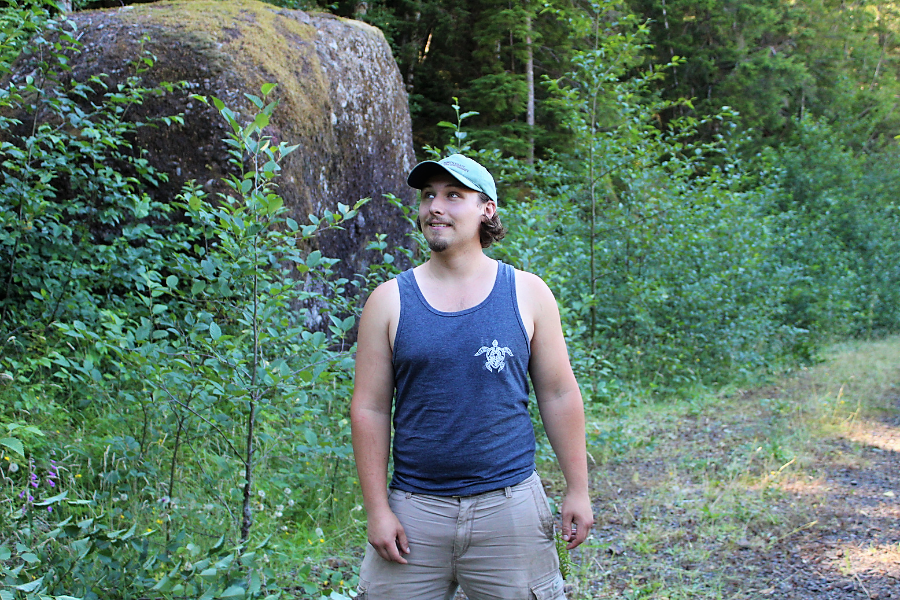
Brendan Deur, a senior at Oregon State University, is serving a summer internship with North Coast Land Conservancy and mapping invasive plant populations in the Rainforest Reserve.
This summer, Oregon State University student and Oregon Coast native Brendan Deur has joined North Coast Land Conservancy for an internship that involves mapping invasive plants in the Rainforest Reserve and the adjacent Arch Cape Community Forest.
Brendan began his internship in mid-June and will finish in mid-September. The internship is fulfilling a requirement for his dual major in sustainability and natural resources management. However, it will have longer-lasting impact for both Brendan and NCLC.
Having grown up in Arch Cape and attended Neah-Kah-Nie High School, Brendan was previously familiar with NCLC and their stewardship work on the coast. He is drawn by both the organization’s “sense of long-term environmental well-being,” as well as the fact that “they’re working in an area I know about and care about,” he says. Because of that, he adds, “I knew I wanted to work here, and I knew I wanted to do something that involved mapping.”
He collaborated with NCLC stewardship director Melissa Reich to develop a work plan that will fulfill the internship requirements set forth by the university and also provide value for NCLC. Together, they decided on a project that involves mapping roadside invasive species populations and surveying the ways in which they are impacting the area.
“This data will support our ecological road assessment project in the Rainforest Reserve,” Melissa says.
Brendan has been visiting the Arch Cape Forest and Rainforest Reserve about once or twice per week over the summer to chip away at the project independently. Occasionally, he has accompanied with other stewardship team members and volunteers. The university requires a minimum of 60 hours to obtain three credits, but Brendan’s efforts will amount to upward of 80 hours by the end of the summer.
During his visits, he identifies invasive plants and then documents them using a program called ArcGIS Field Maps. He will develop a map for NCLC, as well as a report in collaboration with NCLC Stewardship Manager Amy Hutmacher.
While NCLC will benefit from those tangible deliverables, thanks to Brendan’s work, he also is gleaning valuable experience from the internship—and plenty of outdoor recreation.
“I haven’t hiked so much in a couple years now,” he says. “It’s been really fun. It’s refreshing in a way.”
He also appreciates contributing to conservation, which he views as meaningful for the land and the communities of people and wildlife who live here.
“What’s here is not found in any other place, and because of that, it creates a really special and valuable environment we have to protect,” he says. “If you’re living here, drinking the water, breathing the air, eating the food, that’s becoming part of you, part of your being. … I like the fact that we’re taking care of my home place. That’s something I want to do, to keep doing.”
He recalls an instance during the summer when he came across a cedar stump in the forest that was upward of 8 feet wide. Even with some interior rotting, he counted at least 700 rings in the stump.
“It’s sad, because it’s been cut down,” he says.
But there’s a sense of hope now, because the Rainforest Reserve is a habitat reserve.
“You’re going to eventually see trees that big,” he says. “That will eventually be a thing again.”
Comments